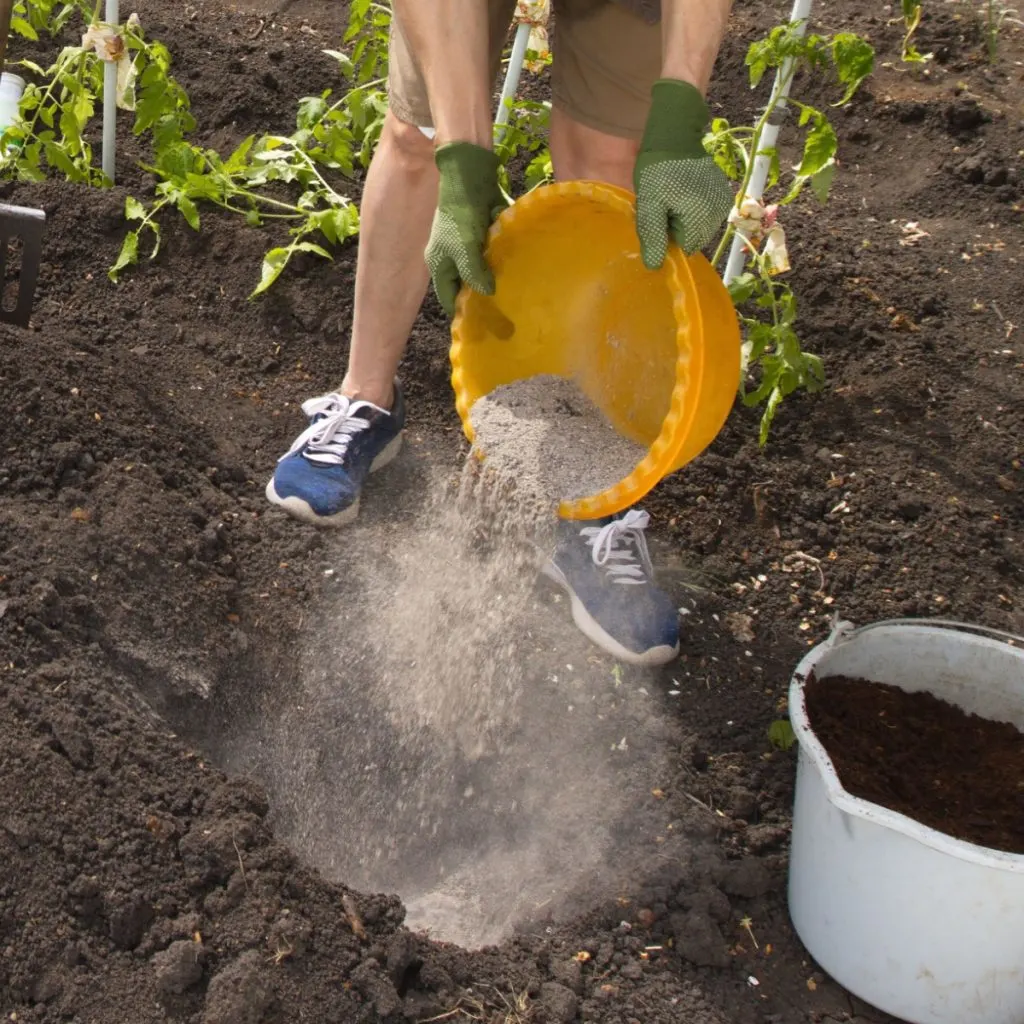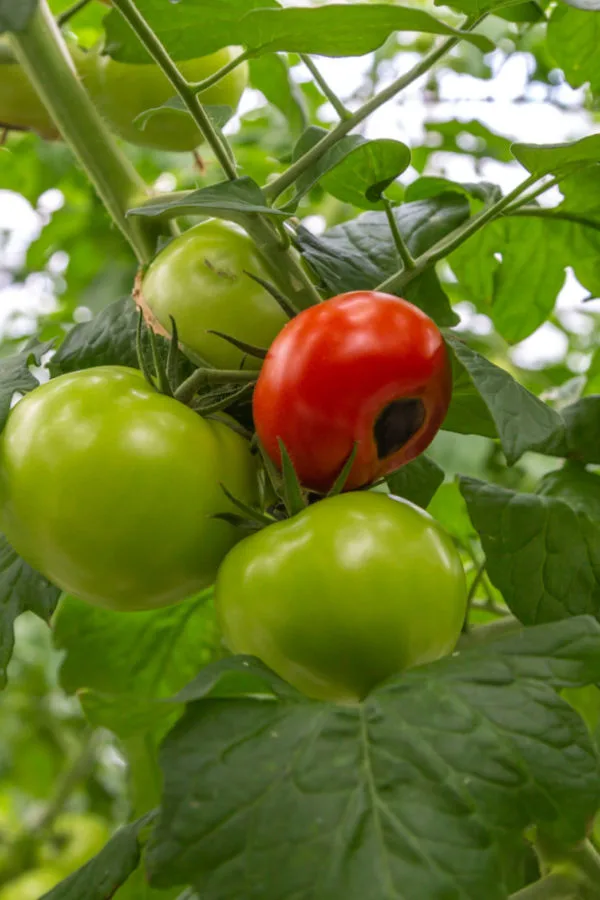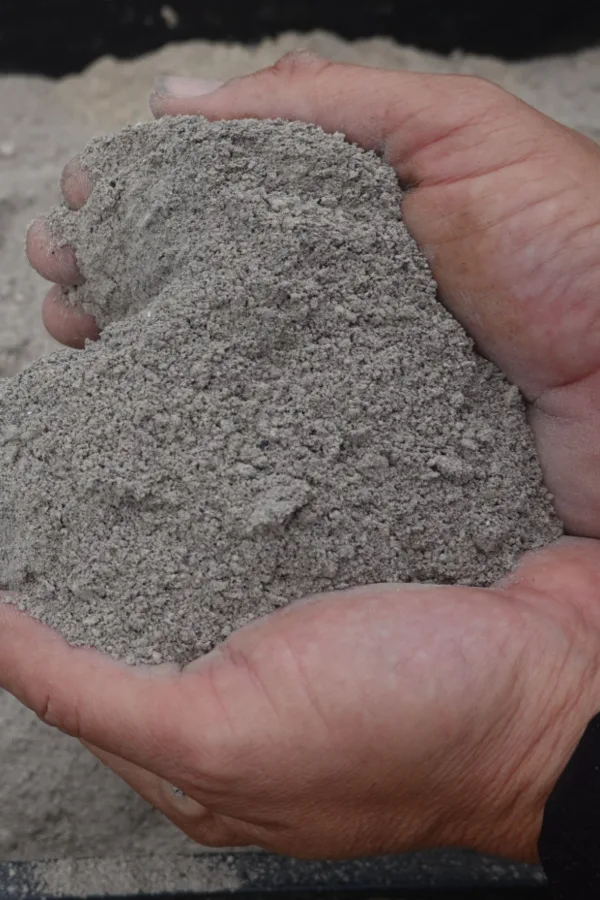One of the best ways to get your tomatoes off to a great start – and help them grow bigger, better, and more productive than ever is by planting them with wood ashes. And is it ever easy to do!
As it turns out, wood ashes can be extremely beneficial all over the vegetable garden. From helping to raise the pH level in overly acidic soils, to recharging tired soil with a multitude of nutrients and minerals.
But when it comes to growing the most popular plant of all in the vegetable garden – the beloved tomato – ashes are truly unbelievable. Not only they can they help keep your plants healthier and safe from blossom end rot and more – they can also be a huge help in delivering a bigger harvest.

Planting Tomatoes With Wood Ashes
How Wood Ashes Help Tomato Plants
So why are ashes so incredible for tomato plants? For starters, when wood burns down, the nutrients left behind in the ash are some of the most important of all when it comes to growing healthy, strong, and highly productive tomato plants.
At the very top of the list of those nutrients is calcium. Calcium is absolutely crucial for tomato plants. Not only does it help young tomato plants develop healthy cells and wall structure for strong stems and branches, it also assists the plant in the successful germination of its blooms.
But as important as those are to a tomato plant’s growth, calcium is even more critical when it comes to a tomato plant forming healthy fruit.
Without enough calcium, tomato plants are highly prone to blossom end rot. Blossom end rot is a disorder that occurs when a tomato plant is calcium deficient. As the tomatoes form on the plant, the blossom end begins to rot. Ultimately, the fruit rots away before it can mature.

Wood Ashes, Calcium, & Potash
The good news is that wood ashes happen to contain a large amount of calcium. In fact, nearly 20% of a pile of ashes is made up of calcium. Even better, those same ashes also contain a fair amount of potassium as well – which just happens to be another key nutrient tomatoes need.
Potassium, or potash as it is often called, is used by tomato plants to help absorb water. And because a tomato consists of nearly of 95% water – the ability to take in more water can certainly be a huge key in developing larger and more juicy tomatoes on your plants.
Potassium also helps power photosynthesis, which helps tomato plants turn light into energy. Energy that then powers strong, healthy growth and more blooms. Wood ash also happens to contain magnesium, phosphorous and other trace nutrients that tomato plants need as well.
If all of that wasn’t enough reason to use wood ashes on your tomato plants, when mixed into the soil around plants, ashes also increase the soil’s ability to retain moisture. That means every time it rains or you water, the plants stay hydrated longer than ever.
Now that we know the benefits ashes can bring to tomato plants, let’s take a look at a simple two-prong approach for how to best use them for great tomato plants.

How To Use Ashes When Planting
The secret to success when using ashes to power tomato plants all comes down to knowing when to apply ashes to the soil and plants – and in what quantity.
Just as with fertilizer and water, too much of a good thing can be harmful to plants. If too little ash is used, your tomato plants can’t get the critical nutrients they need. And if too much is applied, it can change the soil’s pH and negatively affect growth.
So when and how much wood ash should you apply to your plants? There are actually two great ways to use ash on your plants, and you can do both easily and quickly on planting day.
Powering The Planting Hole
One of the most important times to use ashes on your tomato plants is on planting day. Putting ashes directly into your planting holes can give young transplants a big dose of the nutrients they need most early on.
For best results, start by digging your tomato planting hole deep. The deeper you plant your tomatoes the better. This will allow roots to develop all along the stem. This, in turn, provides a strong anchor and the ability to absorb nutrients more quickly. A deep hole also allows you to add in plenty of wood ash as well. See: How Deep To Plant Tomato Plants.

For each plant, mix in about 1.5 cups of wood ash with the existing soil. This is also a great time to add in worm castings, coffee grounds, compost and egg shells. Together, all of these natural ingredients will fill your planting hole with serious power. Affiliate Link: 100% Worm Castings
Top Dressing With Ashes
Once your transplant has been planted, lightly tamp the soil on the surface to set it in place. Now it’s time to add a bit more ash as a topdressing before you mulch your plants.
A top dressing of ash on the soil’s surface will allow even more of its nutrients to leach down into the soil every time it rains or you water. The ash on the soil surface will also help to hold that moisture in place longer as well.
To top dress, scatter about 1/2 cup of ashes lightly around the base of each plant. Finish by mulching your tomato plants as you normally would with straw, shredded leaves or grass clippings. By putting the ash under the mulch, it will stay in place and do its job perfectly.
Fertilizing Your Tomato Plants
One ingredient wood ashes do not contain is nitrogen. Because of that, it’s still important to fertilize your plants as usual on a regular basis throughout the season. When fertilizing, apply a liquid fertilizer every ten to fourteen days at half of the recommended strength. Affiliate Link: Farmer’s Secret Tomato Booster Fertilizer (32oz).
By giving your plants more frequent but lighter doses of power, it keeps your plants consistently energized without overpowering them. If given too many nutrients at once, tomato plants will simply grow bigger. All at the expense of producing new blooms and fruit.
Together, the fertilizer and the ash will give your tomato plants all of the nutrients they will need to give you your best crop of tomatoes ever! For more information on getting the most from your tomato plants, be sure to read our article: The 4 Best Companion Plants For Tomatoes – How To Get Tomato Plants To Grow Better!
This Is My Garden
Follow Our Facebook Page For Great Gardening Tips And Advice! This Is My Garden Facebook Page
This Is My Garden is a garden website created by gardeners, for gardeners. Jim and Mary Competti have been writing gardening, DIY and recipe articles and books and speaking for over 15 years from their 46 acre Ohio farm. They publish three articles every week, 52 weeks a year. Sign up today to follow via email, or follow along!
